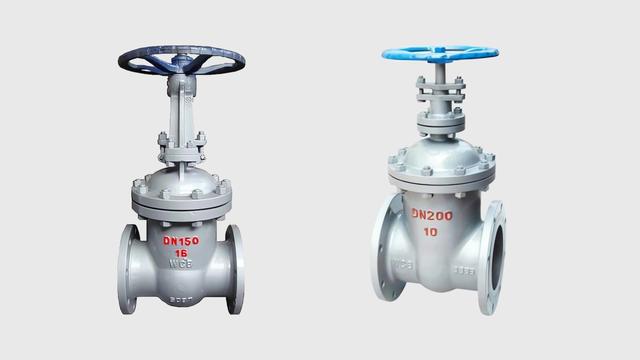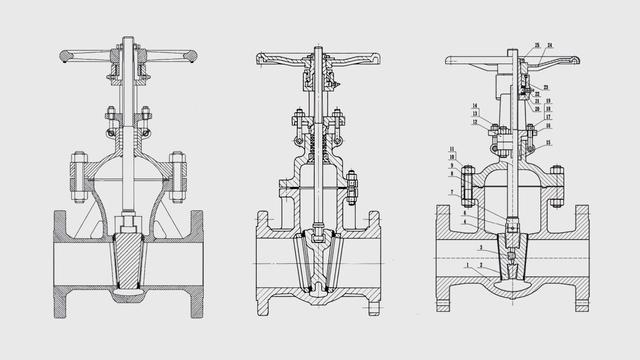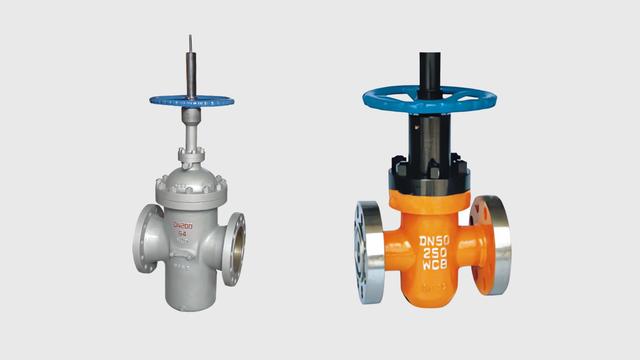The gate sealing surface of the wedge gate valve is wedge-shaped, yani, it forms a certain angle with the center line of the gate. Push the gate to close through the valve stem. As the valve stem thrust increases, the positive pressure acting on the sealing surface of the wedge gate increases, forming a forced seal. Improved sealing for low pressure media. At the same time, the gate sealing surface leaves the valve seat instantly when it opens, reducing the wear of the sealing surface.

Wedge gate valve standard: GB/T12234-2019 Steel gate valve with bolted bonnet for oil and gas industry. GB/T12232-2005 General valve flange connection iron gate valve. API STANDARD 600-2015.The gate of the wedge gate valve is divided into three structural forms: wedge single gate, wedge elastic gate, and wedge double gate. Through the deformation of the sealing surface of the wedge-type elastic gate and wedge-type double gate, a better sealing effect can be formed with the valve seat. And effectively prevent the gate from getting stuck and unable to open due to temperature changes.

The sealing surface of the gate inlet and outlet of the flat gate valve is parallel to the center line of the gate. The single gate seal mainly relies on the medium to push the floating gate or floating valve seat to complete. Double gate sealing can be accomplished by a spring or expansion mechanism between the gates. During the switching process, the sealing surfaces of the gate plate and valve seat are always in close contact with each other.
Parallel gate valve standard: GB/T23300-2009 flat gate valve. JB/T5298-2016 Steel flat gate valve for pipelines. API6D pipeline valve. API6A wellhead and Christmas tree equipment.The gate plate of the flat gate valve is divided into two types: single gate plate and double gate plate. At the same time, the gate can be equipped with or without guide holes. The inner diameter of the gate with guide holes is the same as that of the valve seat, which facilitates pipeline cleaning. It can be combined with the valve seat to form an inlet end seal, an outlet end seal, or an inlet and outlet end seal.

The difference between the two
- The implementation standards are different. Wedge gate valves and flat gate valves have corresponding implementation standards respectively.
- The gate shapes are different. The gate shape of the wedge gate valve is wedge-shaped. The gate plate of the flat gate valve is flat and can be equipped with guide holes to facilitate ball passing and line cleaning.
- The valve stem driving torque is different. The wedge gate valve relies on the valve stem to push the wedge-shaped gate plate downward to achieve forced sealing and has a large torque. The flat gate valve relies on the medium pressure to compress the gate plate and the valve seat to complete the seal. The torque on the valve stem is small.
- The limit control methods of the distributed electrical equipment switches are different. The closing of the electric wedge gate valve is controlled by a torque switch, because a certain torque must be maintained to keep the valve stem pushing the gate plate and produce a certain sealing specific pressure on the valve seat. The closing of the flat gate valve is controlled by the travel switch, as long as the gate position is controlled.
- Different adaptability to media containing suspended particles. The gate plate and valve seat of the wedge gate valve are separated when they are opened. When they are closed, particulate media will enter the sealing surface, causing the sealing surface to be loosely sealed and damaging the sealing surface. During the opening and closing process of the parallel gate valve, the sealing surfaces of the gate plate and the valve seat are always in contact, and particles in the medium cannot enter the sealing surface, making it more suitable for media containing particles.
- Excessive temperature difference has different effects on the gate. When the temperature rise of the wedge gate valve is too large in the closed state, the valve stem will expand due to thermal expansion, which will cause the gate to become stuck. The extension of the valve stem of the flat gate valve has no effect on the gate seal, and the gate will not get stuck.
- The stem position protection of rising stem gate valves is different. The valve stem of the rising stem wedge gate valve leaks and there is no protective cover. There is a protective cover on the upper part of the valve stem of the rising stem flat gate valve, which can protect the valve stem thread from dust and rain corrosion, and there is an opening indicator.
- Whether sealing grease is added to the packing and gate positions. The packing seal position and gate seal of wedge gate valve generally do not add sealing grease. Because the gate plate and the valve seat of the flat gate valve are in close contact with each other during the opening and closing process, adding grease can increase lubrication, reduce wear, and increase the sealing effect. Adding grease to the packing can prevent the packing from drying out and seal and lubricate the valve stem.
